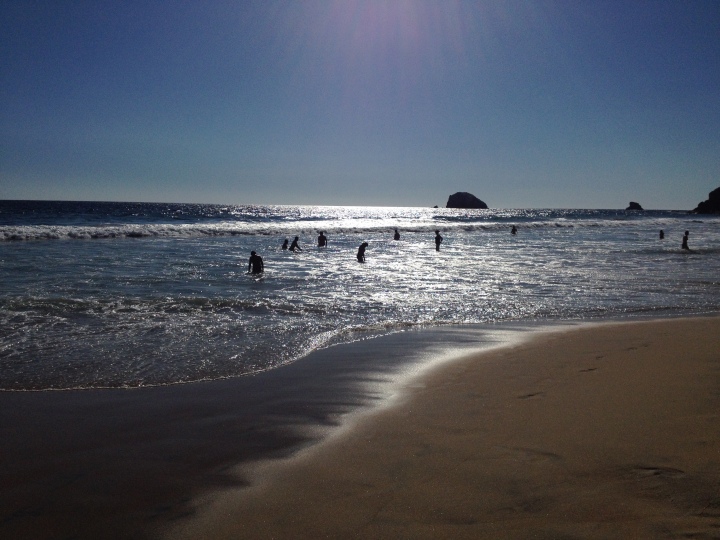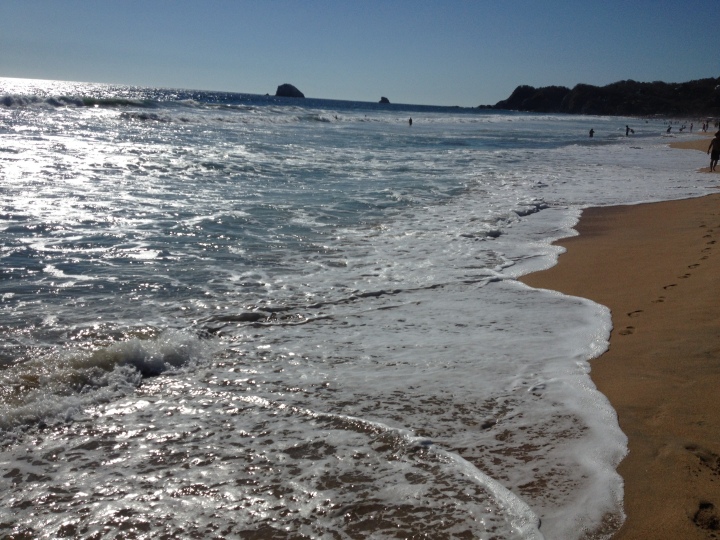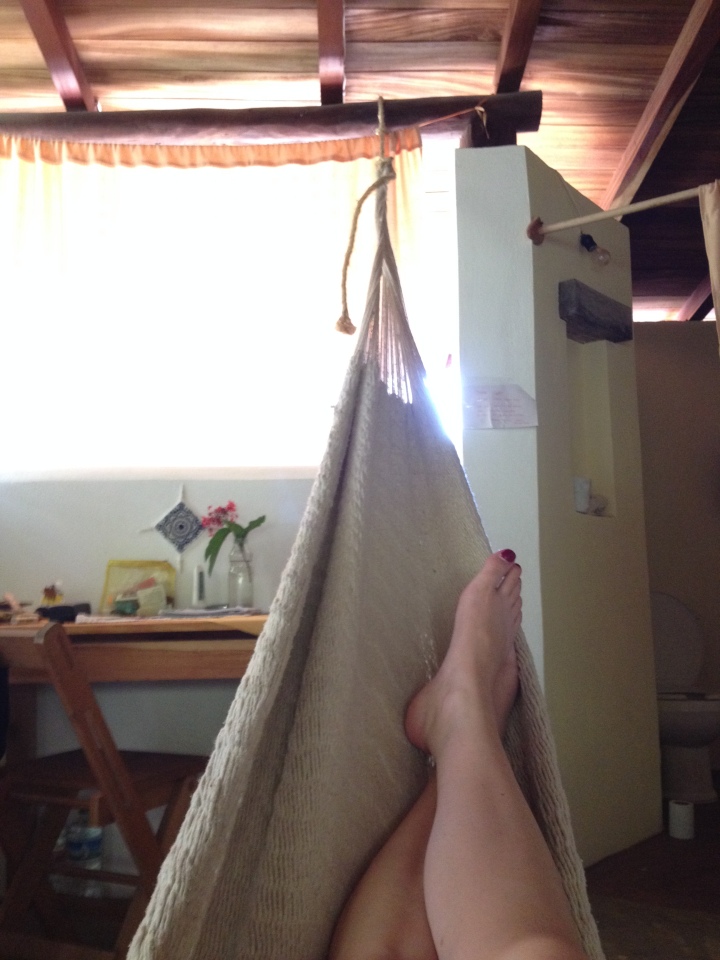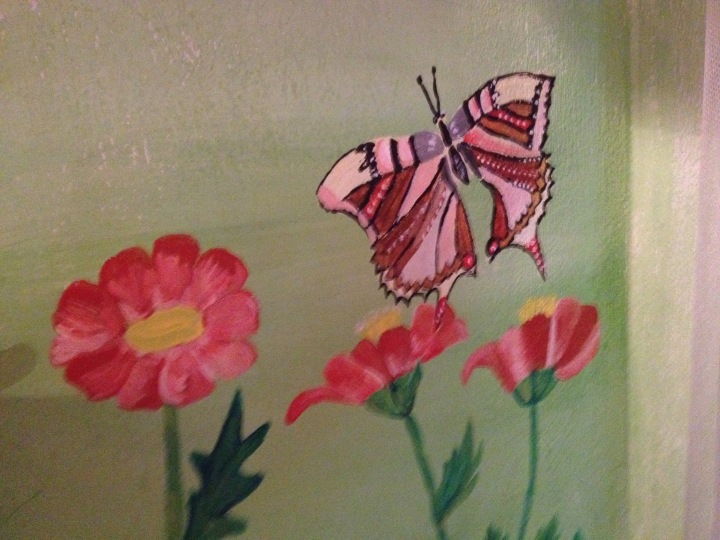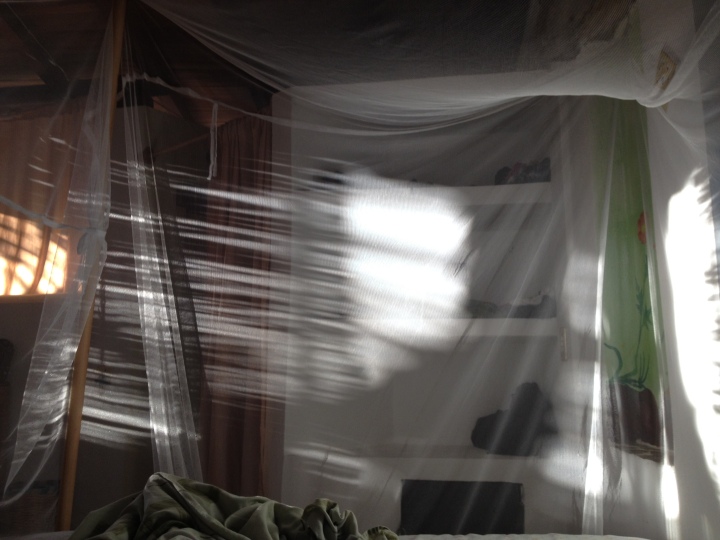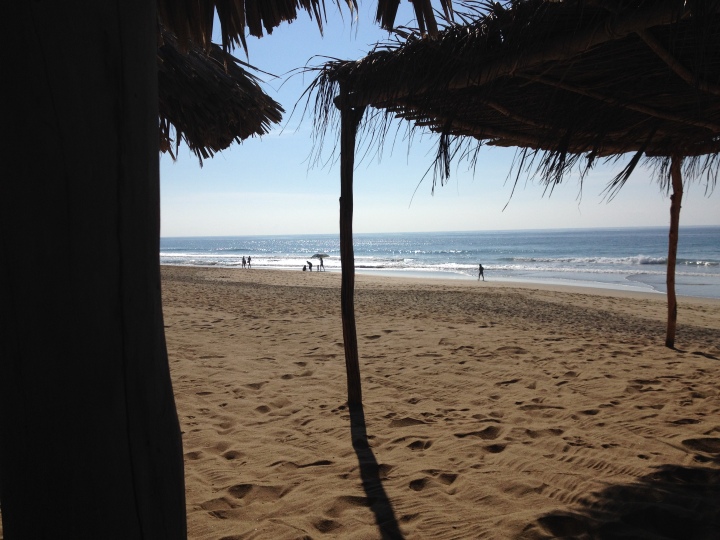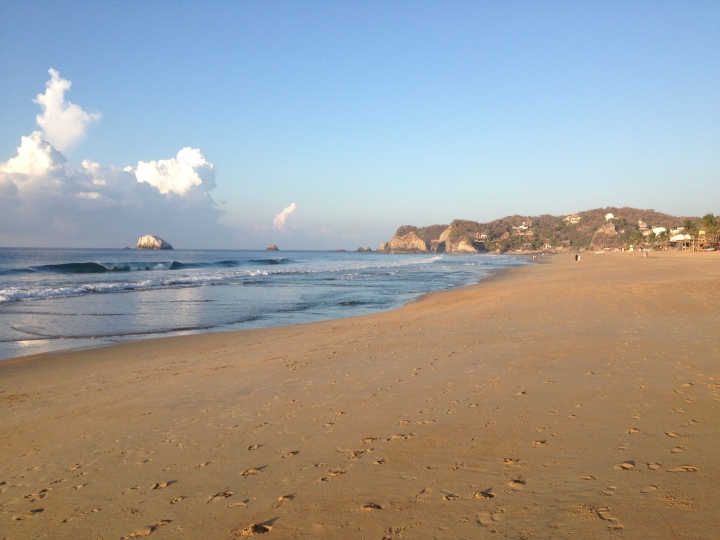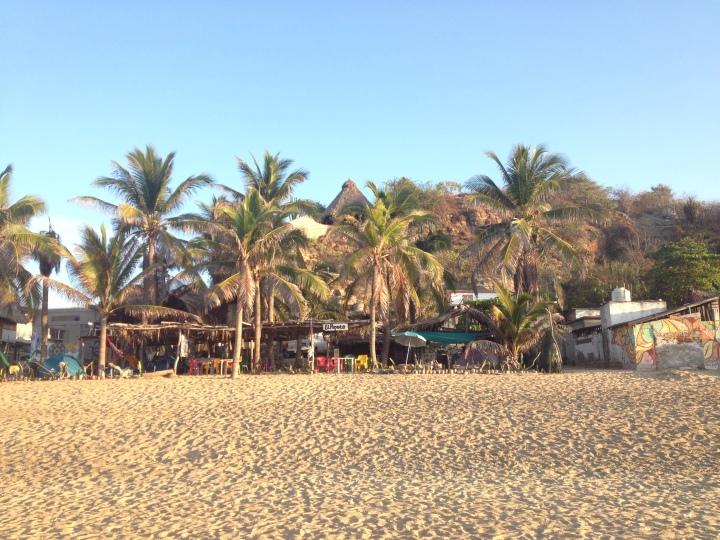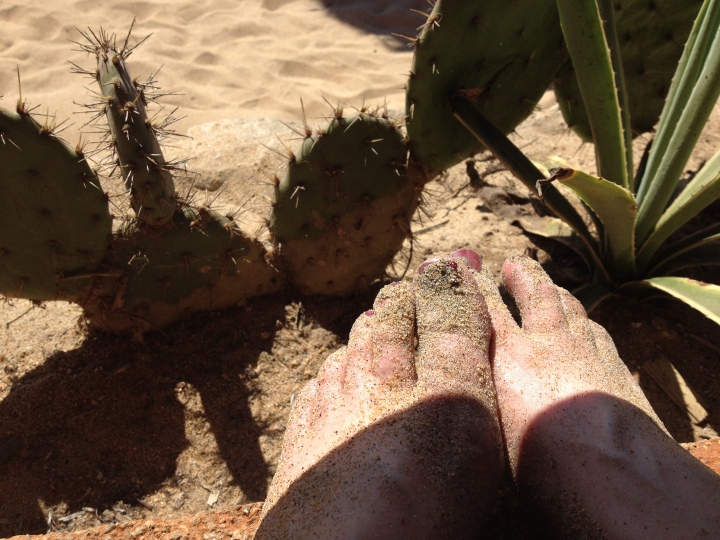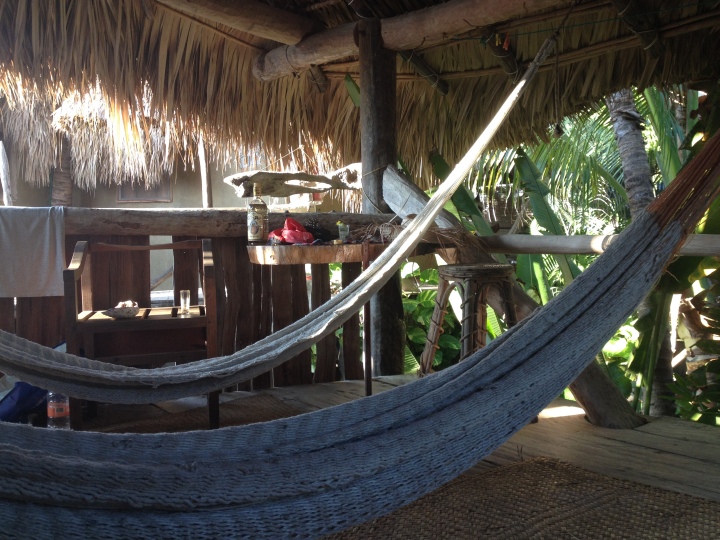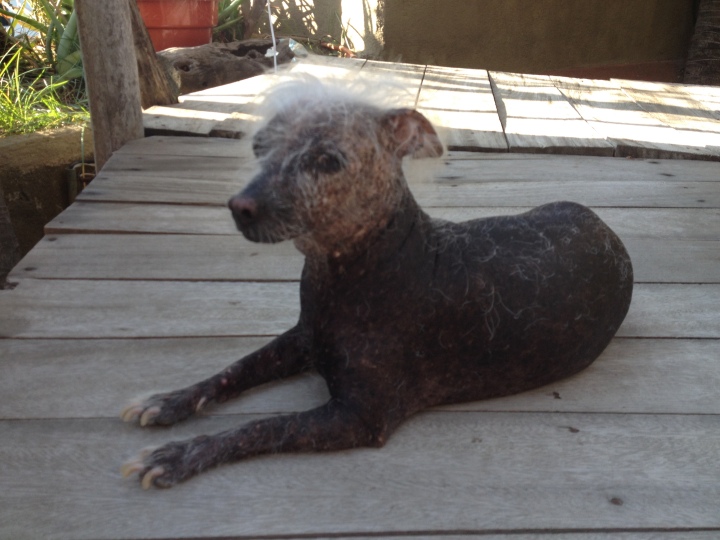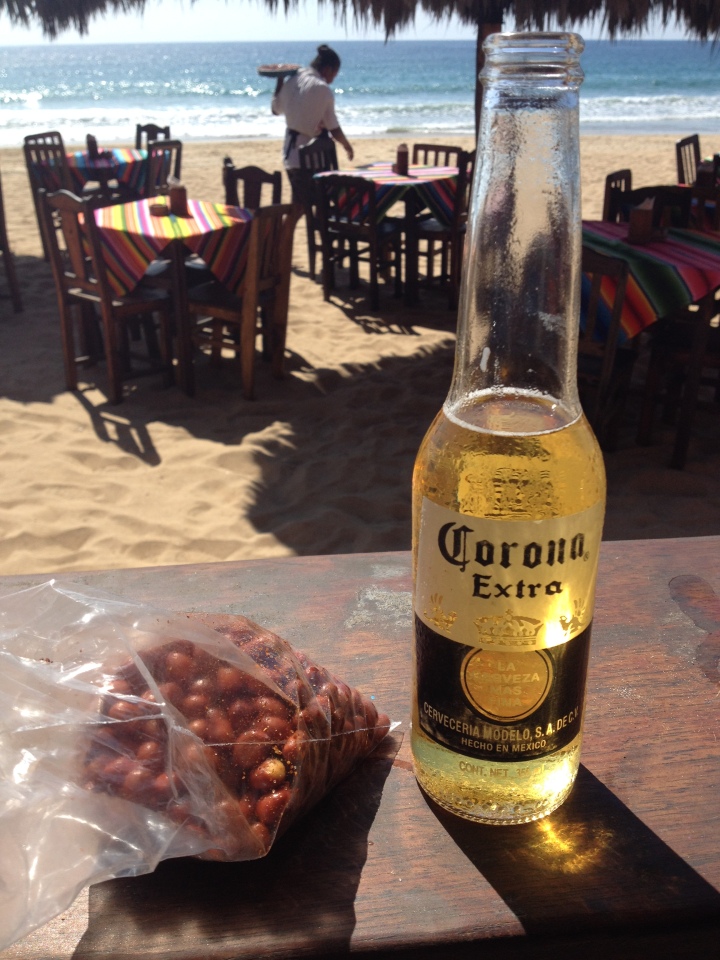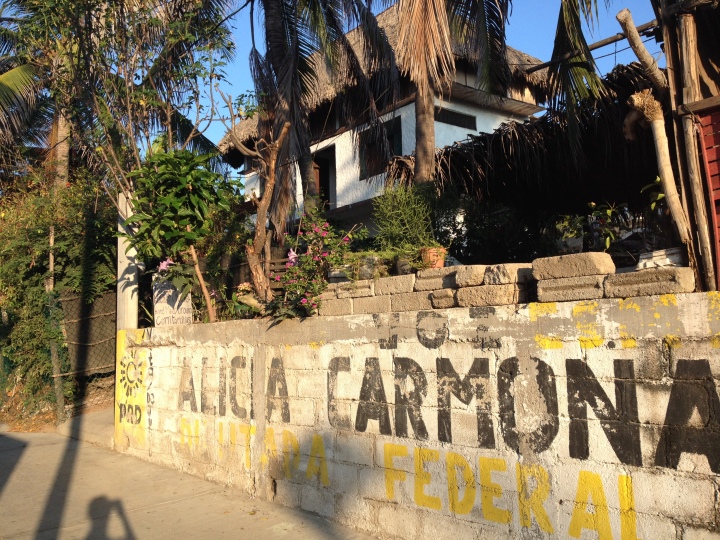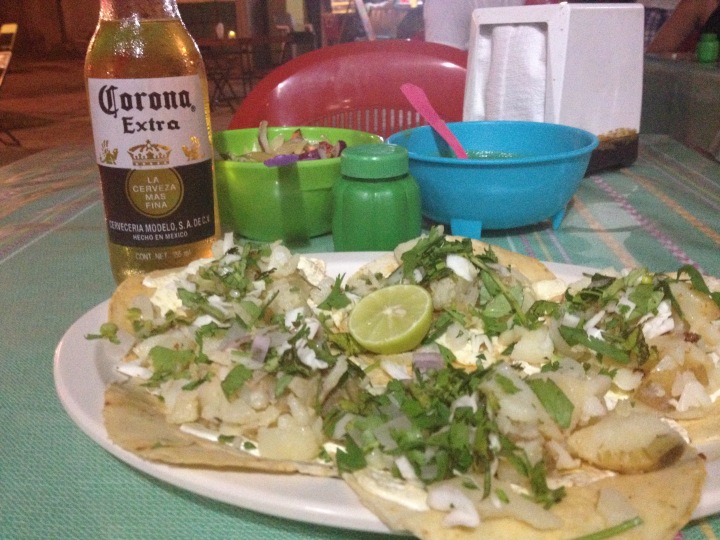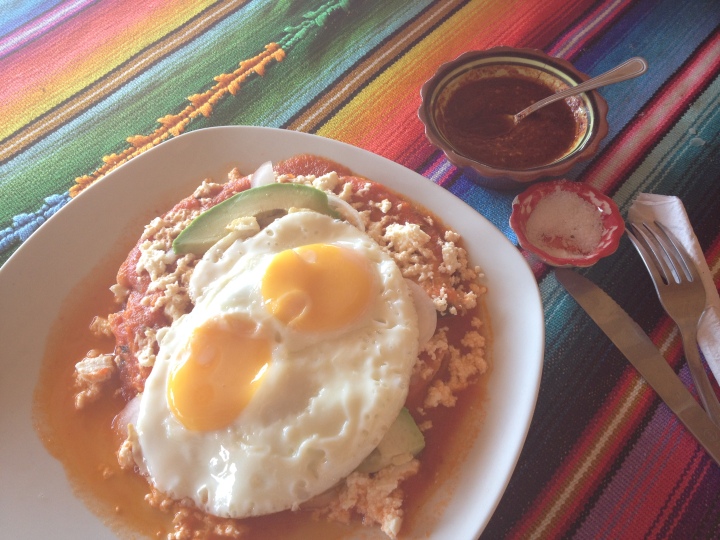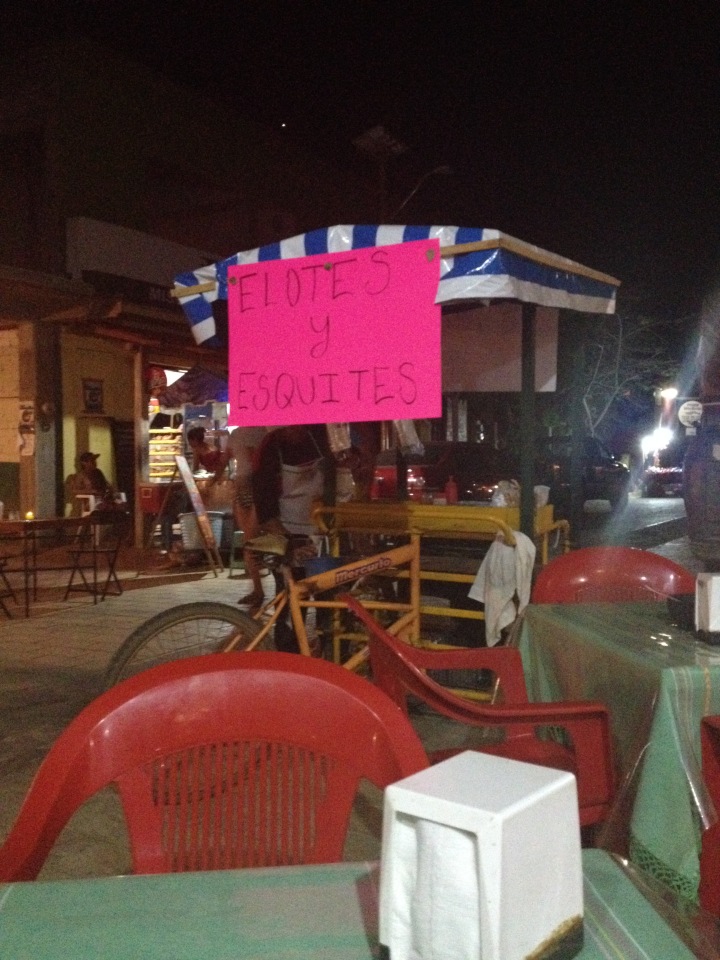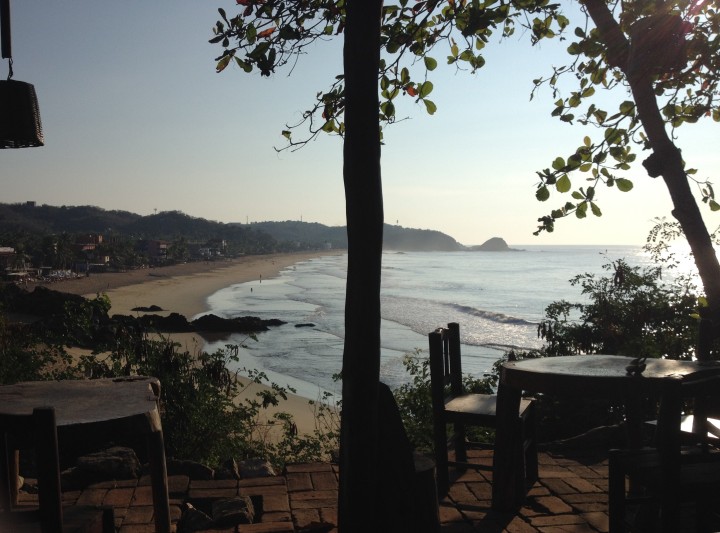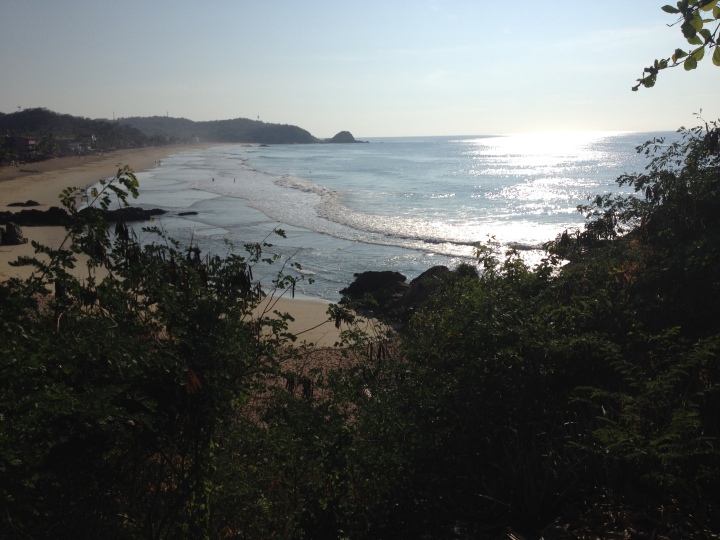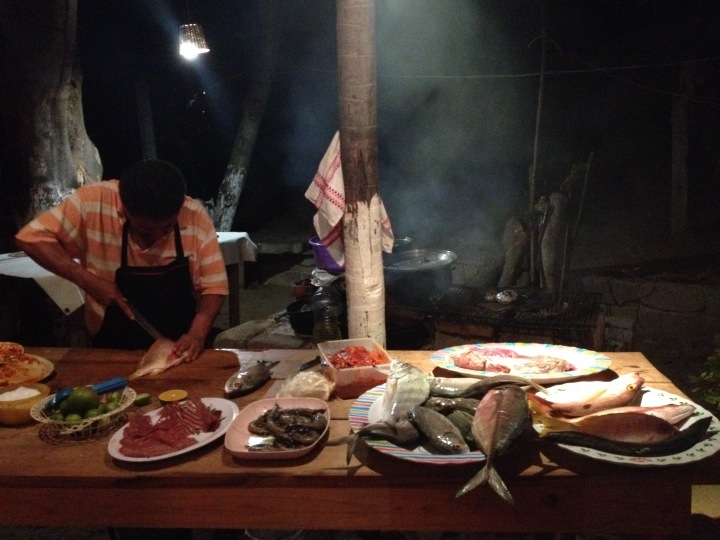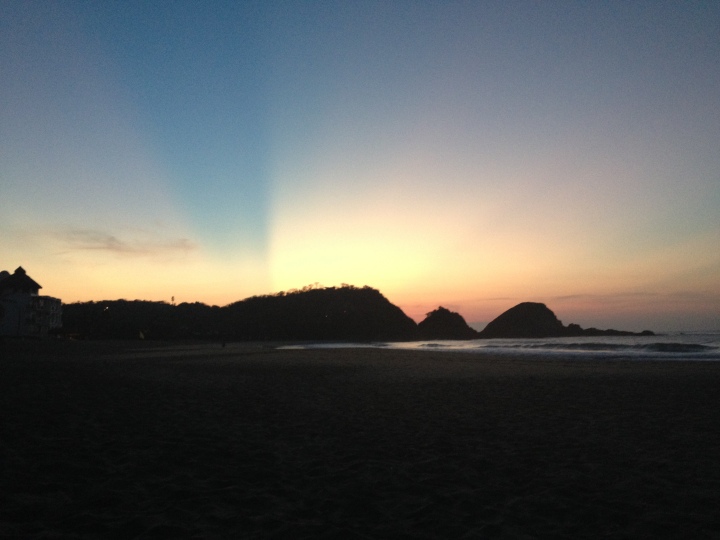There’s no reason for a competent and experienced driver to be intimidated by driving in Mexico. In fact, driving around the country is an excellent option, especially with low prices for rental cars and an abundance of out-of-the-way destinations like colonial towns, national parks, and virgin beaches.
Sure, things are a little different here, but like anything else unfamiliar in Mexico, the main thing you need is patience. And a few tips.

To Drive or Not?
Your budget is the first factor to consider for whether you drive in Mexico or not. Right now, all over the world, renting a car is super cheap, as low as 10 dollars a day. This means that despite toll highways and somewhat pricy gasoline (compared to the U.S.—it’s still lower than in Europe), renting a car may actually be cheaper than using public transportation, especially if you travel in a group or visit places outside of major cities.
Toll highways can be expensive, however, and navigation can be confusing, so before you rent a car to drive between distant cities, at least take a look at the price of domestic flights. Flights within Mexico can be incredibly cheap, often cheaper than a much-longer first-class bus ride.
Also, if you will confine your trip to only one city, then you can easily use public transportation to get around, which will save hassles like getting lost and finding parking. This is especially true for Mexico City, which has an efficient, inexpensive, and reasonably safe metro (subway) system below ground and incredibly busy and confusing roads above. Other major cities also have comprehensive public transportation systems and an abundance of taxis.

For longer trips, buses and passenger vans called colectivos travel to nearly every corner of Mexico, usually for cheap, but again I recommend you compare the price of bus tickets to the price of flights for any trip longer than ten hours.
To get an idea of how much your proposed road trip will cost, you can calculate the tolls and gas on this website, which is only in Spanish but easy to use.
Besides your budget, the second factor for deciding whether to drive in Mexico or not is how many people are traveling. If it’s only you, or you and just one other person, then it’s probably better to fly long distances and take public transportation for short distances. But if you have a group of, say, four or five, the price of a car rental, gas, tolls, and parking should be less than the combined total of all those bus and plane tickets.
So, with your budget and the number of your travel companions in mind, the next thing to consider is what kind of places you plan on visiting. Can public transportation get you there efficiently? To explain I’ll give some example itineraries below.
As I mentioned above, regardless of how many are in your group, if you have a week or less to explore Mexico City, don’t rent a car. You can get around just fine on the metro system without the headaches of traffic, parking, and getting lost. You can use taxis late at night when the metro stops running, but remember that waving them down on the street isn’t safe—ask your hotel for the number of a “safe taxi.”
But if you want to visit Mexico City and then take a trip to a nearby colonial town in the mountains, like Taxco or Tepoztlan, renting a car will give you a lot more freedom and access. Although buses do go to these places, they may not take you to the center of town (bus stations are typically outside the city center, especially in larger cities) or to the trailhead below the mountain you want to hike. You’ll need a local bus or taxi for that, and with a car you can go straight there without delays or haggling.
Another example would be if you wanted to visit the city of Querétaro, where the bus station is far from downtown (although you can easily get there by taxi), and having a car makes it easy to visit nearby destinations like the Pena de Bernal.
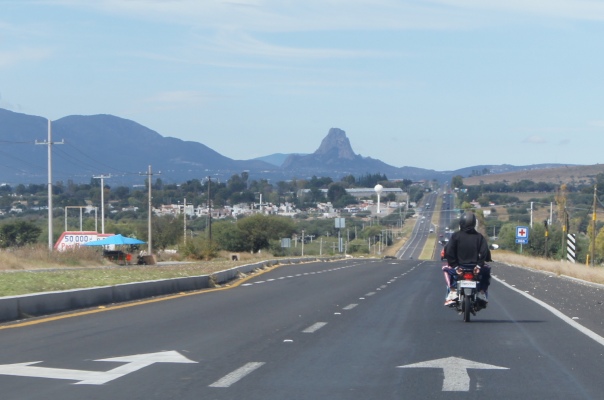
If you’re going to Cancun or a nearby town like Playa del Carmen on the Mayan Riviera, and your main object is to hang out on the beach, don’t rent a car. You can take public transportation for day trips to the main nearby destinations like other beaches, cenotes (underground caves and rivers), or the most popular ruins of Tulum and Chichen Itza.
But, if you want to visit more distant pyramids or cenotes, then renting a car makes sense because you won’t be at the mercy of rigid bus schedules and indirect bus routes. Also, if you’re in group, that car rental might be cheaper than the combined total of bus tickets.
In sum, renting a car is a good idea if you want the freedom to explore and see the country at your own pace, and it will probably save you money if you’re part of a big group. On the other hand, if you’re traveling alone, will only stay around one area, or are worried about getting lost, you can travel well on public transportation, which provides a different kind of freedom: freedom from hassle.
Renting a Car
If you use a third-party website like expedia.com to rent cars, which often has really low prices, be aware that you’ll still have to buy insurance at the rental counter, which may double or even triple the original quote. Third-party insurance (such as the liability insurance that comes included on Expedia rentals) is not valid in Mexico.
So, to prevent getting shaken down buying pricy insurance at the car rental office, take a look at company websites. The usual suspects are all common in Mexico, like Hertz, Alamo, National, Budget, Thrifty, Europcar, Avis, and Sixt.
Consider all the options for pick-up and drop-off locations, and carefully read all the details about the car (the cheapest ones are usually manual transmission) and about the contract, like insurance and mileage. Usually you’ll pay a smaller deposit when you buy more insurance, so if you don’t want an expensive package, make sure the credit card you use for the deposit has a high limit, like thousands of dollars.
If you only want the car for part of your trip, then you can pick it up at the airport and then drop it off at an office in the city near your hotel. This is also a good option for traveling between distant cities. The rates are calculated by day, so if you pick the car up at 4 p.m., you’ll drop it off at or before 4 p.m.
Or you can pick up the car somewhere in the city in the middle of your trip and later drop it off at the airport when you leave. For example, if you were going to spend a week in Mexico City (where you wouldn’t need the car) and then a week driving to nearby towns, you could take the metro to one of the rental offices in the city to pick up the car and then drop it off at the airport before you fly home.
(Be aware that cars, rentals too, must have a special permission to drive in Mexico City. This is both to reduce traffic and because of environmental concerns. So if Mexico City is your final destination and you’ll be arriving by car, think about dropping off the rental as soon as possible to avoid getting a ticket. If you rent a car in Mexico City, however, it will have that permission.)
Part of the process of renting a car is when the agent walks around inspecting it for previous damage and recording it on a piece of paper. Pay attention during this time—if he fails to notice something, you’ll be charged for it later.
Finally, you don’t need an international driver’s license to drive or rent a car in Mexico if you’re from the U.S., Canada, Europe or many other places.
Driving Across the Border
Yes, you can drive your car into Mexico, though you will be charged $15 for a temporary import permit and must use a credit card (expect this to change). Ask at the border and tell them your destination—if your trip is no farther than 25km from the border, you don’t need this permission, nor do you need it for the Baja Peninsula or the western half of Sonora.
For safety’s sake you should have car insurance that covers you in Mexico, which you can buy online or sometimes in offices outside the border on the U.S. side. Your U.S. (or Canadian, etc.) coverage is not valid in Mexico.
When you come across, after passing immigration where they check your passport, you’ll go through customs next. It’s a simple procedure, just like at the airport: If the light turns green, you’re free to enter, and if it turns red, your car will be searched. The vigorousness of the search seems to be directly related to your patience and politeness with the officers—if you complain or ask them to hurry up, you can be sure that the search will be comprehensive and slow.
A tip: If you’re only going to spend your time in the border town, just walk across. You’ll understand why when you come back and see the huge lines of cars waiting to enter the U.S.
Safety
Aside from some crazy drivers (more on that below), driving in Mexico is generally safe. The worst possible things could be a carjacking in a big city or a robbery at a fake roadblock on a lonely highway.
There’s not much you can do to prevent the first one, other than keeping your windows rolled up at intersections and at night. As for the fake roadblock, it’s a good idea to ask some locals—the friendly person at the front desk of your hotel, if you can’t find anyone else—if the highway you are planning on taking is known to be dangerous.
If you get into a serious accident, wait for the police to come and have your insurance ready. For minor fender-benders, however, Mexicans usually settle up in cash right there on the side of the road. If it’s your fault, offer a few hundred pesos, and if it’s the other person’s fault, it’s up to you if you want to ask for money or call your insurance company.

Police
Although I would never recommend speeding, you don’t really have to worry about getting pulled over in Mexico. I have never once seen a speed trap on a highway, and very rarely have I heard of people being pulled over for running red lights or other such reckless driving.
There are two types of police in Mexico, traffic police (transito) and the regular kind, who may be state or federal. The transito police deal with—surprise—all things related to traffic, which typically means directing it rather than actually policing it. You can usually spot them by the orange on their uniforms.
It’s possible to be stopped in a city for running a stop sign you didn’t notice or some similar unclear infraction. In many instances the police are only looking for a bribe, especially if they mention a refresco, which literally means a soda but is slang for a bribe. Yes, it’s common for Mexicans to bribe their way out of tickets, but as a foreigner it could get you in a lot of trouble. Speaking terrible Spanish may help, as they won’t want to deal with you or bother giving you a ticket. The most important thing is to remain calm and polite.
The other police, not transito, have nothing to do with traffic violations. At any rate, both types of police usually drive around with their sirens on all the time, so they won’t be sneaking up on anybody anyway.
Finally, a word on checkpoints and roadblocks, common in cities and highways. In most cases you simply slow down and the police or military will wave you through. Don’t stop unless they tell you to. They’re looking for drug smugglers, not tourists.
In tourist areas, like the Mayan Riviera near Cancun, the checkpoint might actually be a tourist information service. For safety’s sake, of course slow down, but once it’s obvious that they aren’t the police (teenagers in colorful shirts, for example), just keep on rolling.
And as I mentioned earlier, in a big city at night, at the checkpoint the police are probably looking for drunks. If you’ve been drinking and are told to pull over, follow all their instructions with as much politeness as you can muster. You’ll have to show ID and blow into a breathalyzer. The limit is 1.6, and expect this to change. If you blow over the limit, you’ll be taken to jail and your car will be impounded if there’s no one sober enough to drive it for you. You can try bribing the police at your own risk—I am NOT recommending it, but it could get you out of a night in the drunk tank.
Gas Stations
In 1938, President Lazaro Cardenas nationalized Mexico’s oil reserves, which means there is only one type of gas station in Mexico: Pemex. The prices are similar nationwide for the two types of gas, magna (which is regular) and premium.
(As I write this, gas prices and the possible privatization of Pemex are big issues. We may be seeing competing gas stations soon. Read an overview of this here.)
You don’t pump your own gas; an attendant does this for you. If you don’t speak Spanish and want to fill the tank, say:
“Lleno de magna, por favor.” —Fill it up with regular please.
Notice how the attendant says “ceros” (zeros) before it starts flowing. This is because a common rip-off used to be that there would already be liters of gas marked on the machine, a good way to overcharge the unmindful. I’ve never actually seen this, but it becomes a habit to check the machine to see that it’s blank.
The attendant will wash your windows, check your oil, and check your tire pressure if you ask him to. But even if he only pumps the gas, give him a tip, between 5 and 10 pesos—round up the price of your gas.
At night, keep an eye on your surroundings—dark, lonely gas stations are good places to get robbed.
Navigation
Perhaps the main challenge for driving in Mexico is navigating, both in cities and highways. Unless the route is direct and simple, merely checking it beforehand on a map and then following signs is not enough, as road signs in Mexico are often confusing, incorrect, or simply nonexistent.
If you have a smartphone, then get the app Waze. It will calculate your route and give you alternates when there is bad traffic. Of course, apps like this work best when you compare them with a physical map, especially if you’re off the beaten track. You can find lots of stories on the internet of people following these apps into lakes, rivers, or bad neighborhoods. Apps are super useful, but must be combined with common sense to function properly.
Also, these apps are best used by your friend sitting shotgun. Trying to follow them while driving, especially in the heavy traffic of Mexico City, isn’t only difficult, but exceedingly dangerous.
If you travel with Mexicans, you’ll notice a popular way of navigating—pulling over and asking directions. Do this as much as possible, but don’t be surprised if the directions you get are wrong. As soon as you feel like you are getting lost, ask again.
I’ll say it again, for the third time now I believe: Do not drive in Mexico City unless absolutely necessary. You will get lost. I’ve been driving there for seven years now, and still get lost every time. There’s even a song about it by the Argentinean ska band Los Auténticos Decadentes:
Road Rules and Culture
The road rules in Mexico are basically the same as in the U.S., Canada, and other English-speaking countries. One difference I’m still not quite used to is that, at least on busy roads, Mexicans wait for a signal to turn left on a green light rather than just waiting for the opposite lane to clear. This also may apply for right turns on busy roads.
Before it turns yellow, you’ll see the green light start flashing, which means it will change soon. But for many driver, the yellow light doesn’t mean slow down, but speed up, which brings us to driving culture.
People in Toluca, where I live, joke that at night you drive through the red lights and stop for the green lights, meaning that you should stop for green because of the people running the red lights. Yes, there is a general disrespect for road signs in Mexico, which is so prevalent that on the highway there are actually signs saying “Respect the signs.”

Now, before I get into driving culture, let me make two comments. First, most drivers in Mexico are perfectly competent and respectful. It’s just easy to notice the bad ones. Second, Toluca (where I live) is especially known for bad drivers. So, please remember that the common annoyances I mention below for sure don’t apply to all parts of Mexico, nor to all Mexicans.
Besides running red lights, drivers also commonly run stop signs. At 4-way intersections without a traffic light, people usually don’t alternate, but instead push their way through whenever they can. This also happens when lanes merge—people don’t take turns, which ends up causing a lot more traffic.
Another major cause of bad traffic is that people tend to park anywhere, sometimes blocking an entire lane of a busy road or invading the sidewalk. And if it’s not someone parking in an inconvenient spot, then it’s a taxi driver, either letting someone out or simply waiting for a fare.
Yet another annoyance is that many people don’t use their turn signals. You’ll see drivers making incredible turns in heavy traffic, including U-turns, which are legal as long as there isn’t a sign against it. You’ll also see people taking turns really wide, even on the highway, continually crossing back and forth across the white lines.
Mexicans in general are enthusiastic horn-honkers. I once read that the definition of a moment is the time between a light changing green and the first horn honking. Some people honk as they speed through intersections, as if this will prevent an accident.
There are so many incompetent drivers in Mexico that there’s even a word for them: cafre. You can often spot a cafre by the terribly beat-up car they drive, but not always. Typical cafre behavior, besides not using turn signals and parking everywhere (even spots reserved for the disabled), includes changing lanes suddenly without checking the blind spot, turning left from the far-right lane (and vice-versa), driving with small children or dogs on their laps, and either driving too fast on residential streets or driving too slow on busy city streets.

Drunk driving is a serious problem in Mexico, despite all-night breathalyzer checkpoints on major city thoroughfares. It’s such a problem that you’ll see horrible accidents if you drive around after midnight on a Friday or Saturday. So be extra careful on weekend nights and holidays. And obviously, if you drink, don’t drive. Besides safety reasons you might end up in a breathalyzer checkpoint, and if you blow over the limit, you’ll be taken to jail.
Finally, pedestrians do not have the right of way in Mexico. Keep your head up when crossing the street, and don’t be surprised if someone running a red light speeds right at you. And of course—this should go without saying, but I’ve seen many travelers do this—don’t walk in the road, but stay on the sidewalk, no matter how uneven it is.
There’s really only one way to deal with all of these nuisances: Have patience, both in the car and on foot. Try to never be in a hurry and always look both ways.
Topes and Baches
Perhaps the prevalence of aggressive, selfish drivers is why Mexican (and most Latin American) roads are filled with speedbumps, called topes. Anyone driving in Mexico will have to learn to spot the topes, which are often unmarked and practically impossible to see at night. Hitting them hard will make everyone in the backseat bounce up and hit their heads on the ceiling, or worse, give you a flat tire.
The best way to spot them is to watch the cars in front of you. When you see one slow down and the tail lights bounce, it’s probably going over a tope. But if there’re no other cars, just do your best to spot them, especially on long, straight stretches of road.
Baches are potholes, and though unintentional, they serve the same purpose as topes—slowing you down and possibly giving you a flat tire. So, again, keep an eye open for them at all times.
City Driving
The first challenge to city driving is navigation. In big cities you’ll encounter nightmarish traffic, especially during rush hour and Mexican lunch time (between 2 and 4 p.m.). Add bad road signs and bad driving habits—not letting people in, people parking everywhere, lots of honking—and you could be in for a very frustrating experience.
When you get to an major intersection, your car will be approached by people selling things or offering to wash your windshield. Sometimes they don’t offer but just go at it, immediately spraying it with soap. You can try waving your finger or yelling “no” at them, but it’s usually easier to just give them a peso.
If you drive in a city, you’ll have to park. In the daytime, you can pretty much park anywhere, though for safety’s sake don’t park on an empty street and never leave belongings in view inside the car. The “E” (estacionarse) with the line through it means “no parking,” though you’ll almost always see cars parked under them.

If it’s a busy street or outside of a big event, like a concert or parade, there will be guys walking around telling you that they’ll watch their car for you. They also may offer to wash it. Ask how much, pay, but don’t give these people your keys.
Unless there is a guy offering to watch your car, don’t park on the street at night. You’ll want to use a parking lot, which fortunately are common in big cities. Be sure to ask what time they close.
You’ll see little parking lots everywhere that charge by the hour. It’s a good option in the daytime too, especially if you have anything in your car like luggage. Usually you’ll have to give them your keys. When you do, they ask if you have anything of value in the car. Put those things in your trunk, and tell them what they are.
Valet parking is common for restaurants and nightclubs. Same thing, tell them if you have any valuables in the car. Before you book a hotel, always make sure it has free parking.
Highway Driving
Driving on the highway is the real pleasure of driving in Mexico. You’ll pass incredible scenery and have the freedom to visit any small town or natural area you want.
Highway driving is safe in most parts of Mexico south of Mexico City. In the north, especially near the border, there are some highways you should not drive on after dark. The best way to find out is to ask locals, for example the person at the front desk of your hotel.
In some dangerous areas, like near the U.S. border or the state of Michoacan, criminal gangs set up fake roadblocks, either disguised as military or openly criminal. They will stop you, rob you or, if you’re lucky, simply turn you around.
This typically happens on the freeways, not the toll roads. There are two types of highways in Mexico: cuota (toll) roads, and libre, freeways.
Toll roads can be expensive, but they’re nearly always safe at all hours and include insurance. They’re patrolled by mechanics, so if you break down or have an accident they will help you for free. You can check the price of toll roads on this government website, which also calculates the gas. It’s only in Spanish but fairly straightforward.
Often where there’s a toll road there’s also a free road going the same way. It might seem like a good way to save money, but the free roads usually take a lot more time, especially if you get lost. They may have only one lane and you’ll get stuck behind a slow truck. They may pass though a small town and have no signs telling you where to go. So, in general, always take the toll road unless you have reliable information that the free road is direct and safe.
Driving culture is a little different on the highways too. Passing is the most important to understand. As usual, drive on the right and pass on the left. But on many two-lane highways in Mexico, especially on newer toll roads, there’s a wide shoulder on either side divided by a broken white line. When someone wants you pass you, drive about half-way onto the shoulder to let them get by. You’ll see how trucks drive this way, especially when climbing mountains.

When you see the car in front of you put on a turn signal, it means it’s clear for you to go. Besides this, there are other strange turn-signal usages that I don’t quite understand. For instance, people stopped on the highway sometimes put on their left signal, which means they are stopped, not that they are about to pull out in front of you.
People put on their hazard lights when they are slowing down quickly, such as when there is traffic ahead.
There aren’t rest stops on Mexican highways. If you need to use the bathroom, you usually have two options: at a toll booth, usually after you go through it, or at a gas station. In both cases you’ll probably have to pay around 5 pesos for this.
If you’re driving at the beginning or end of a major holiday, like on a Sunday night coming into a big city (with everyone returning from their weekend trip) or on a Friday afternoon leaving a big city (with everyone leaving for their weekend trip), you’ll hit heavy traffic, especially approaching toll booths. Avoid driving at these times if possible.
Final Word on Driving
I like to joke that Mexicans are nice people until they start to drive, for all the reasons I wrote above. But the truth is that the lousy drivers are a tiny percentage of the population. Most people are perfectly courteous and law-abiding.
If you get frustrated, remember that you’re the one cruising around having a nice vacation, while every other poor soul on the road is struggling to get to work. Take a deep breath, slow down, and try to enjoy it.




